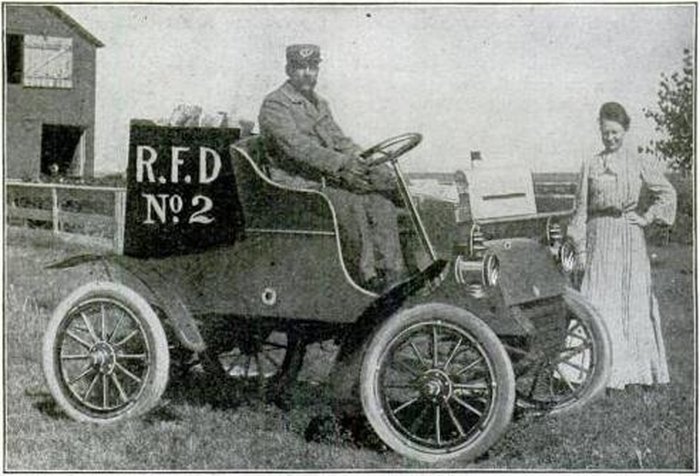|
My city-bred mother relished the novelties of rural West Virginia. She drove my brother and me to hand pumps outside one-room country schoolhouses, church ladies’ quilt sales on farmhouse lawns, and Eleanor Roosevelt’s experimental community at Arthurdale. The mailbox at the end of our street, which excited me with the possibility of a new Donald Duck or Mickey Mouse, inspired her for its tie to the birthplace of Rural Free Delivery.
Urban door-to-door mail delivery became common after the Civil War. Farmers asked, why must we travel miles into town to pick up our mail, when we pay as much for stamps as everyone else? Pressure from the National Grange and the Farmers’ Alliance overcame Congress’s reluctance to fund vehicles, road improvements, and rural carriers. The Post Office began experimental routes in West Virginia in 1896. RFD expanded quickly and became permanent in 1902. Long before American farm families had radios, telephones, or electricity, RFD connected them to the wider world. Rural delivery would never turn a profit. That was not the intent. Like roads and schools, universal postal service helped unite the nation and served the public good.
4 Comments
Connie Gill
8/24/2020 09:24:54 am
I really enjoy having this perspective on the postal service. I shared a link to it with colleagues, friends, and family.
Reply
8/25/2020 07:42:23 am
Connie, thanks for sharing the link! So glad you enjoyed.
Reply
8/26/2020 08:50:34 pm
Glad it came through! A profit motive - or even a need to break even - will never get postal service, railroads, cell coverage, or Wi-Fi to remote areas. The USPS has a concept called "Universal Service Obligation" to provide at least a minimal level of service to every place in the nation.
Reply
Leave a Reply. |
AuthorI'm a historian who writes novels and literary nonfiction. My home base is Madison, Wisconsin. Archives
July 2024
|

 RSS Feed
RSS Feed